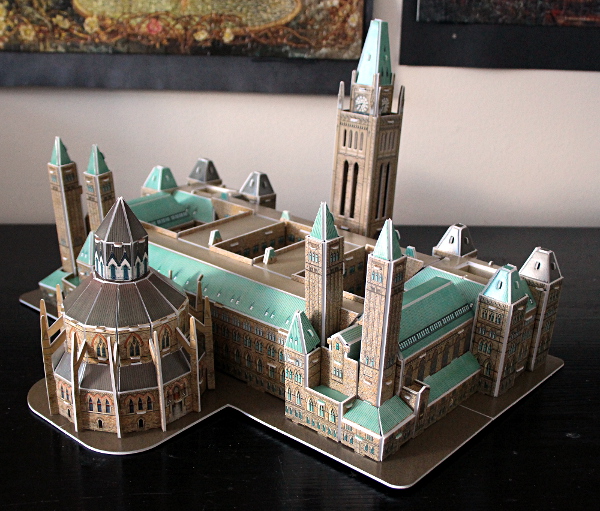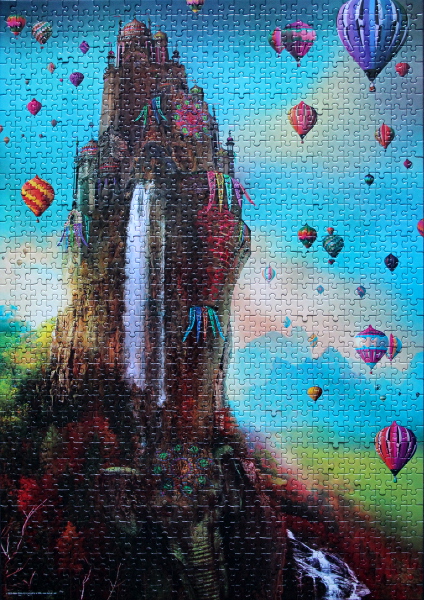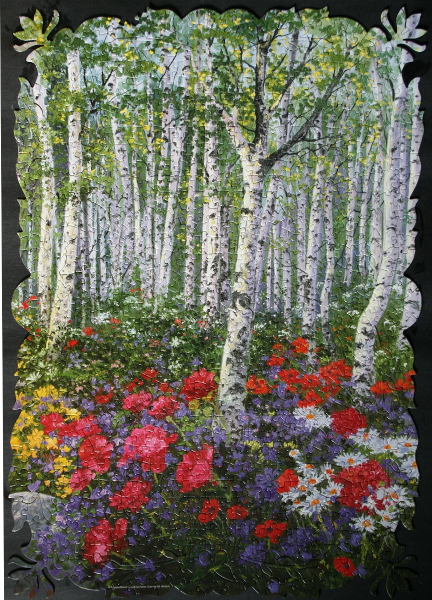Size: 87 pieces
Dimensions: 28.4 cm x 28.4 cm x 18 cm
Producer: CubicFun, 3D Puzzle series MC, #MC081h, complexity 4/5
Original packaging: unable to find on the CubicFun site
Puzzle: Following the St. Basil’s Cathedral and the Taj Mahal 3D puzzles, I am now perpetually on the lookout for other higher-complexity puzzles made by CubicFun, and found a Canadian one in a nearby toy store (Mrs. Tiggy Winkles), sold as a special before Christmas.
Here is the box, the booklet (see below for the historical information contained therein) and sheets with puzzle pieces.
I have done this in three stages:
1. Separating all the pieces from the sheets in which they were embedded.
2. Punching out the holes in the pieces (I used a tip of a mechanical pencil).
3. And putting together the puzzle itself. Below are the progress photos (this time I had enough willpower to stop briefly to snap a few photos):

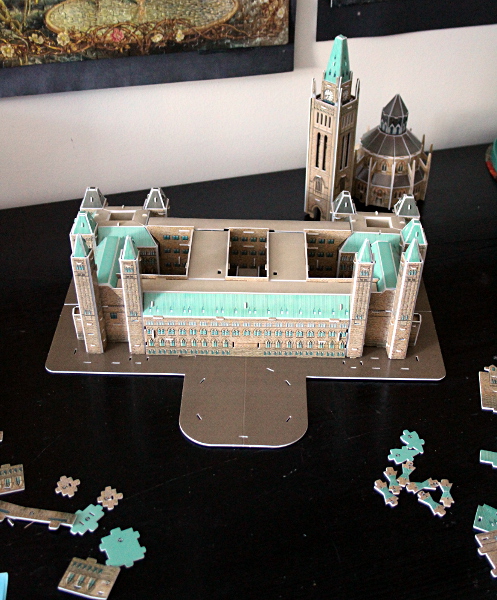


The sides of the back buildings were tricky – there were several small pieces that had to fit together just so, and ended up not fitting very well, snapping off easily (tape to the rescue), and causing the edge towers and roofs to tilt. While rotating the puzzle, I had to keep straightening them.


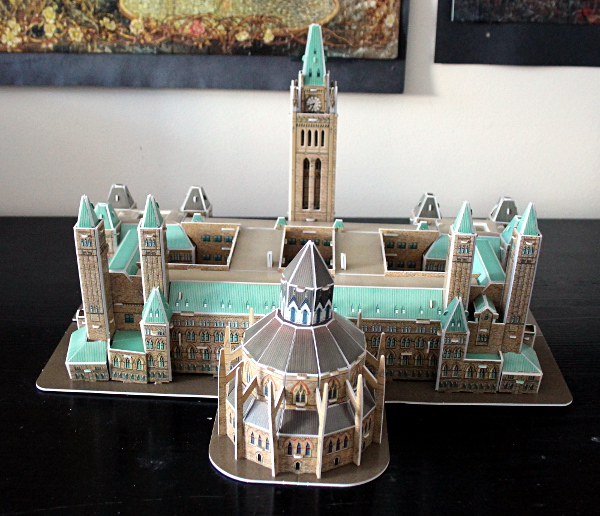
A fun puzzle to do. However, compared to the previous two, punching the holes was not as easy: the pieces often did not fully separate, and attempting to remove the unnecessary parts peeled off the top layer of paper, so I had to be very careful to try minimizing the damage. This seems like a manufacturing issue with this particular puzzle, as the previous two puzzles did not have it.
I also had my 3 year-old catch me at separating the pieces from the sheets and insist on participating. He was mostly successful with some supervision (which speaks to how well the puzzle sheets are designed), with minimal damage to a couple of pieces, most of which I was able to fix with glue.
Notes from the puzzle booklet:
“The world’s famous architecture we build it. Parliament Buildings [Canada]
Tourists can visit the House of Commons and Senate chambers in the Centre Block. Inside the rotunda are the statues of Queen Victoria and former Prime Ministers of Canada. The office of the first Prime Minister, John A. MacDonald, in the East Block is open to public.
The parliament buildings were designed in Gothic Revival style and were made of sandstone and granite with magnificent carvings.
The parliament buildings are three edifices arranged around three sides of Parliament Hill’s central lawn. The Centre Block which contains the House of Commons and Senate chambers, features the Peace Tower on the south facade with the Library of Parliament at the building’s rear. The East and West Blocks each contains ministers’ and senators’ offices, as well as meeting rooms and other administrative spaces. The ground was broken in December 1859, followed by a number of other extensions to the parliament and departmental buildings. A fire destroyed the Centre Block in 1916. The Parliament Hill took on its present form with the completion of the Peace Tower in 1927.
The parliament buildings are fronted by the Peace Tower standing at 92.2 meters tall on the south facade of the Centre Block. CUrrently, the Peace Tower with 4.8 m clock face and 53 bells in its carillon is known as the world’s most delicate architecture in the Gothic Revival style.
From late June to the third week of August, the Changing of the Guard Ceremony takes place on the Parliament Hill. It starts a little before 10:00 in the morning when the Old Guard arrives. Once the Old Guard has been inspected, the New Guard arrives to relieve them.
The Mosaika Sound and Light Show takes place every evening on the Parliament Hill from early July to early September. A powerful narrative set against the spectacular backdrop of Parliament Hill, Mosaika takes the audience on an unforgettable journey of sound and light, as we explore Canada’s physical, historical and cultural landscapes. This bilingual show is 45 minutes in length and free of charge.
When visiting the Parliament Hill, visitors will fall in love with the solemn and magnificent buildings, pleasant charms from Peace Tower, Royal Canadian Mounted Police Ceremony, and the Sound and Light show.” [Puzzle booklet]












